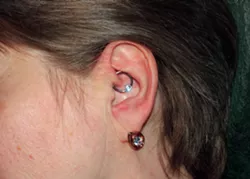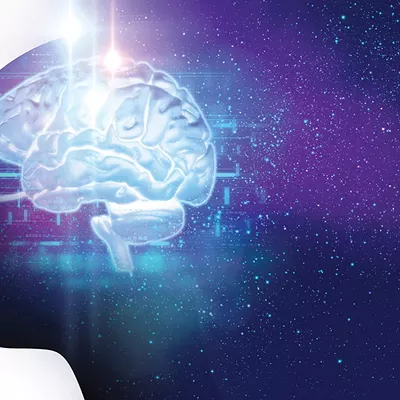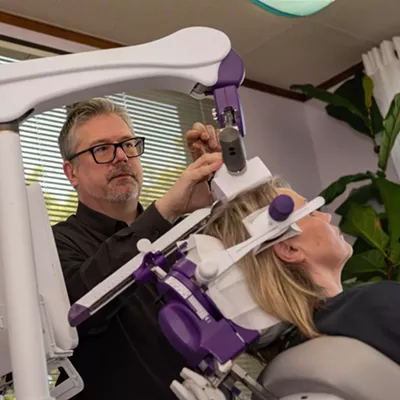In sixth grade, I had 21 excused absences from school.
I wasn't playing hooky like some of my teachers might've thought. I was suffering from one of the most debilitating conditions a person can have: migraine headaches.
It began with funny shapes and streaks of lights appearing in my field of vision — something I would later find out is called visual aura — and persisted in the form of unbearable, splitting pain in my head.
So no, migraines aren't just "bad headaches." They're incapacitating and, in some cases, life-altering.
My migraines began when I was about 9 years old. I had heard my mother and my grandmother complain of "headaches," and I'd seen what the "headaches" had done to them. Suddenly, I was experiencing those very same things.
Nausea, temporary loss of vision, aversion to light and horrendous pain in my head and eyes.
Migraine has followed me to my adult life as well. Migraine eats up my sick time and ruins my weekend plans. My migraines have never really let up or gotten worse, I just expect to get at least two to three day-ruining headaches a month.
Sometimes, when I'm in the thick of it, I feel like I'll never be able to emerge from the pitch-black room and the pain will never stop. When my usual cocktail of two Excedrin Migraine and a cup of coffee doesn't do the trick, I turn to ice hats purchased off of Amazon, steaming hot showers to temporarily soothe my pain and writhing around in a dark room until I finally fall asleep. I'm not religious, but sometimes I ask whatever is out there to please, please help me.
Most of the time, sleeping for a few hours does the trick. But sometimes, I can do nothing except wait and hope that by morning the headache dissipates and I can return to my normal life.
For those who cannot escape the pain of a migraine or suffer from head pain on the daily and can't manage with over-the-counter medicine, there are people like Dr. Wade Steeves.
Steeves got his start by working at various neurology clinics while in college. He liked it so much that he decided to pursue medicine, specifically neurology. After completing his neurology residency at West Virginia University, Steeves relocated to Spokane Valley and practiced general neurology at MultiCare Rockwood Clinic. In 2019, he opened his own private practice, Valley Neurology.
Steeves is technically a general neurologist, but his patients call him "The Headache Guy" due to his specialization in face and head pain.
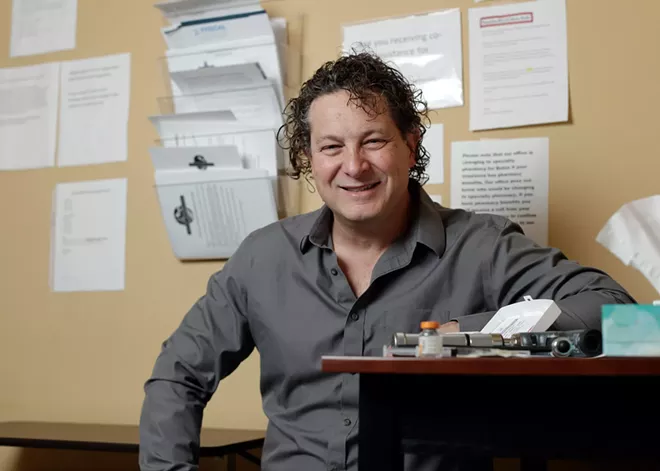
PAIN DRAIN
Migraine is extremely complicated. Everyone feels different symptoms when they experience migraine. It's a complex disease, but Steeves explains it well.
"Curiously," he says, "you don't have pain receptors in your brain. But the coverings of the brain, the meningeal layers, are loaded with pain receptors. Loads and loads, all over the place. There are loads of nerve endings called C-fibers [that]contain naturally occurring inflammatory molecules that are ready to go at a moment's notice in case you get an infection in that area."
As Steeves explained, migraine is an inflammatory disease. That's why over-the-counter medication like ibuprofen and other anti-inflammatories can relieve mild headaches and take the edge off migraine headaches.
"People who have migraine headaches have C-fibers that are a little too leaky," Steeves says. "And so even when there's no infection going on, you get this inflammatory response. It's almost like a mild case of meningitis but without the infection."
To be considered a chronic migraine sufferer you generally have to experience 15 or more headache days a month. Steeves says if you have one or more a week, you should seek out treatment to improve your quality of life.
Steeves mentions that if someone in your family has migraine headaches, then you're more likely to experience them in your lifetime.
"They're hereditary," he says. "It's not just one or two genes that code for migraine, it's like 30-plus different genes. About 18% of the population has the right genetic foundation to be prone to having a migraine at least once or twice in their lives, and anywhere from 5-10% of those people will be chronic."
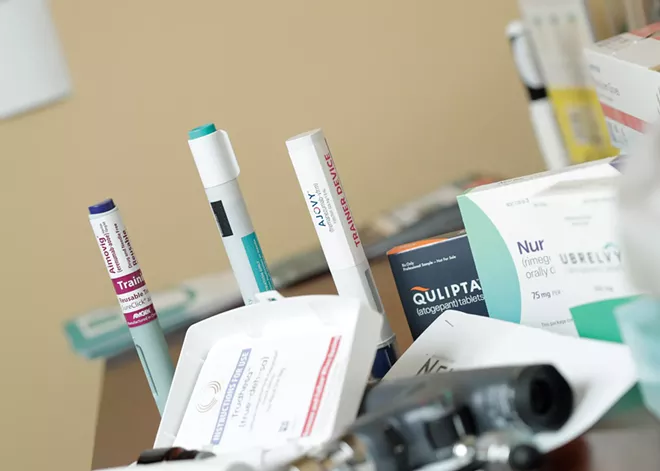
MIGRAINE MYTH BUSTING
If you're like me, you've tried just about everything to make your migraines go away.
I've done some pretty ridiculous things, and I've tried a lot of gimmicky products in search of relief.
I've gone as far as installing a green lightbulb in my room after reading a Harvard study claiming that exposure to green light can reduce headache severity in migraine sufferers. These lightbulbs go for anywhere from $15-$30 on Amazon and claim to emit certain wavelengths of light that "ease photophobia and provide relief."
As for the rising popularity of green light therapy in treating migraines, Steeves hasn't seen a study about it that has impressed him yet.
Steeves says while it might seem like these random things can help migraines, patients are most likely experiencing a placebo effect.
"The effects of placebo can last two to three months believe it or not," he says. "The human brain is extremely powerful. It can make you feel things that aren't real. It can cause psychological changes just by the power of belief."
A popular belief is that daith piercings, which pass through the ear's innermost cartilage fold, can reduce the amount of headaches migraine sufferers experience.
"That's pure placebo in my opinion," Steeves says. "Same with acupuncture. I tell my patients who want to do that to make sure the piercing looks cool because, in three months, they'll be back in my office asking me for a different medication."
"I have some patients who seemingly find great success with piercings and acupuncture," he says. "Like they won't have a headache for two years. But, I view that as coincidence — their migraines probably went into remission."
MAKE IT STOP!
Steeves doesn't wish migraines upon his worst enemy, but he says that there's never been a better time in history to have a migraine.
"It's an exciting time because in 2018 there was a new generation of migraine prevention meds that have been absolute game changers," Steeves says. "These meds are targeted therapy that pinpoints and stops that one inflammatory molecule. And, as it turns out, in about 80% of migraine patients, that's all you need. It's a great time to be a migraine provider because we have stuff that really works and works with way lower side effects than what we used previously."
These are medications like Aimovig, Ajovy and Emgality that are usually self-administered via subcutaneous injections.
"Those are the big three migraine medications that have been raging successes," he says. "They work preventatively. So many patients have seen improved quality of life."
Steeves focuses mostly on preventative care in his practice as patients who are referred to him have usually gone through other basic treatments with their primary care physicians. He says he never wants to see one of his patients suffering with a migraine so bad that they end up in the ER.
Fortunately, a migraine is one of the few things in neurology that we can actually treat.
tweet this
He takes a somewhat holistic approach to his patient's day-to-day preventative care, suggesting supplements like butterbur, magnesium, vitamin B and riboflavin to build up a barrier along with their preventative meds.
These supplements can also be used alone as preventative care.
"If your migraines are mild, maybe three or four attacks per month, and you start butterbur and they get better," he says. "Then you can just use Excedrin or ibuprofen when they come on. That's great, nothing wrong with that."
The best treatment option for chronic migraine, in Steeves' opinion, is Botox.
"Believe it or not," he says. "Botox got approved for chronic migraine in 2010. I've been using it since it got FDA approved, and it's the bomb. In some patients, it takes awhile to work, so I ask them to hang in there until they start to see improvement."
Instead of just blocking the CGRP molecule like the injectable medications, Botox tightens up the aforementioned "leaky" pathways and stops the molecule from passing through at all.
So, when do you know it's time to see a neurologist?
"Hopefully never," Steeves says. "But, fortunately, a migraine is one of the few things in neurology that we can actually treat and get people feeling quite a bit better."
Even when your migraines seem to be taking over your life, there are more migraine treatments now than there ever have been before. Don't lose hope.


